Where to Dump Grass Clippings?
Making your lawn look better and healthier doesn’t end when you mow. You’ll mostly have a pile of grass clippings in the mower or bag. The next job is figuring out how to get rid of them.
The easiest way to dump grass clippings is to leave them on the lawn. If that looks messy, use the clippings as mulch or compost. Other options include donating or tossing them to waste sites if it’s legal in your city.
Can I throw grass clippings in the garbage?
You can throw grass clippings in the garbage if your state and local authorities permit yard waste collection and disposal.
Research if your city allows grass clippings disposal, and follow the guidelines for packaging the clippings before dumping them into the garbage.
If they don’t, repurpose the grass clippings or donate them.
Ways to dump grass clippings
Grass clippings disposal depends on whether you focus on repurposing or total clearance. You have a few great options that suit your needs. Use these practical ways to dump grass clippings.
Leave them on the lawn
Letting grass clippings lie on the lawn after mowing is one of the best things you can do. You save on the extra time to rake and dump the clippings and benefit your yard simultaneously.
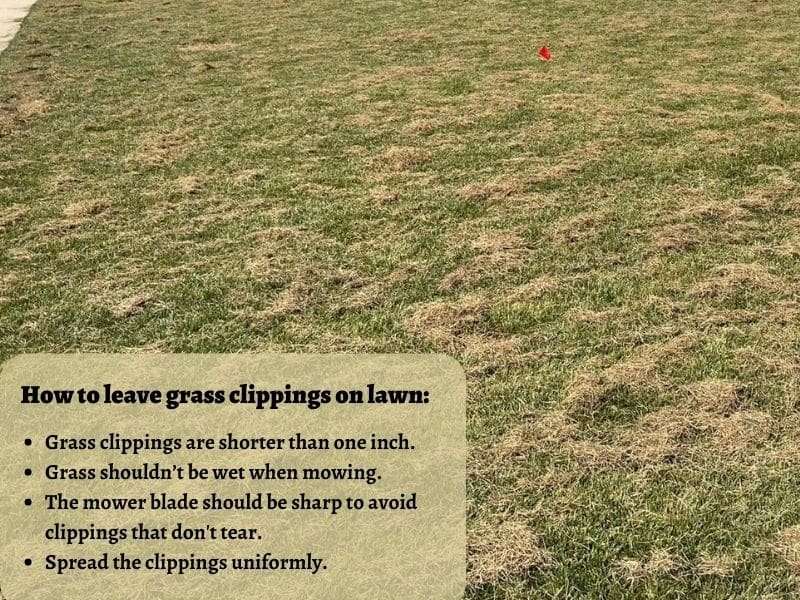
However, leaving grass clippings on the lawn, also called grasscycling, should be done under certain conditions.
You must have been mowing regularly before leaving clippings on the lawn. Often mowing ensure the grass clippings are shorter than one inch, making them decompose faster and adding nutrients back to the soil.
The grass shouldn’t be wet when mowing. Wet clippings form clumps and encourage fungi growth. The mower blade should also be sharp to ensure the clippings don’t tear.
Leaving grass clippings on the lawn is beneficial as the clippings decompose fast and add nutrients to the soil. Grass recycling adds up to 25 percent of the fertilizer needs of your grass, helping you save money on lawn feeds.
Clippings also provide food to microbes which break organic matter in the soil.
Another reason to leave grass clippings is to help rehydrate your lawn and regulate soil temperatures.
Spread the grass clippings uniformly over the lawn.
Compost the clippings
If you choose not to leave the clippings on the lawn for aesthetic reasons, compost them.
Grass clippings are rich in nitrogen. They release nitrogen into the soil if composted.
The clippings should be less than 1 inch long to prevent them from clumping for faster decomposition.
Composting grass clippings is simple, and you can do it in these few steps.
- Choose a suitable location away from your house. The ground should be leveled and non-flooding.
- Mix the grass trimmings with the brown matter, such as dry shredded leaves, for faster decomposition. Brown matter is carbon-rich. The carbon speeds up the decomposition by reacting with nitrogen from the grass clippings.
- Moisten the mix sparingly with a hose. Moistening increases the decomposition rate and provides suitable environmental conditions for microbes.
- Turn the compost off often to decompose it faster. Turning it weekly and lightly watering it accelerates decomposition.
- Your compost grass clippings will be ready for use in approximately twelve weeks.
Use the clippings for mulch
Turn the grass clippings into mulch for your garden, container plants, or flower beds.
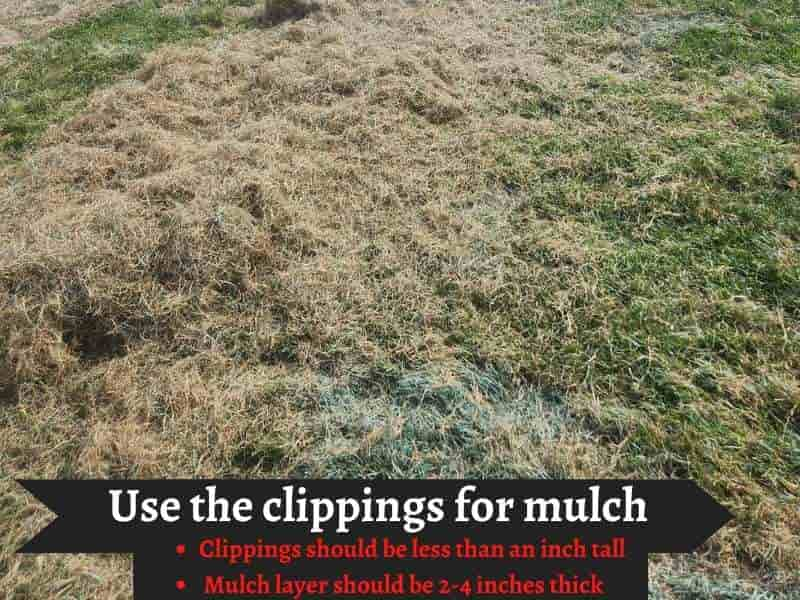
Mulching controls soil erosion, increases organic matter in the soil, and keeps the ground moist by reducing evaporation rates. It also smothers weeds in the garden.
You can mulch using fresh clippings or dry them before use. The grass clippings should be less than an inch tall, and the mulch layer should be 2-4 inches thick. A thicker mulch impedes water and air passage to the roots, damaging plants.
Use grass clippings as animal feed
Discarded grass clippings are a reliable food source for farm animals. Feed the fresh grass trimmings to your cows, sheep, domesticated birds, or goats.
You can also turn the clippings into hay by drying them to feed your rabbits, guinea pigs, and other animals.
However, the grass clippings should not be wet as they may form mold quickly. If you recently treated your lawn with herbicides or pesticides, don’t feed your animals with grass clippings. These products have harmful chemicals detrimental to your animals if they ingest them.
Dump them in a waste container
Throwing your grass clippings into a waste container is sometimes the only thing you can do, especially when you have no farm or other options are not viable.
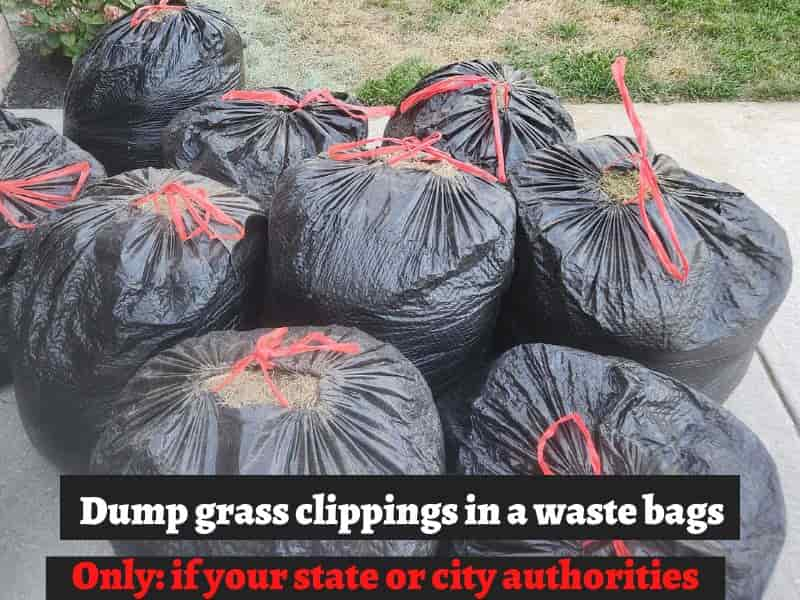
Toss grass clippings into a waste bag if your state or city authorities allow residents to collect yard waste. Research if your local authority permits yard waste collection before you dump your grass clippings.
If it does, follow the guidelines on collecting yard waste and wait for the local waste collection day so the waste collection guy can pick it up.
Donate the clippings
You can give grass clippings to someone who wants to reuse them.
Ask your neighbors or friends if they may need grass clippings. While you may incur costs such as paying gas fees, you can negotiate with them to pick up the clippings. After all, it’s free fodder or mulch for them.
Ask your local farmhouses or greenhouses’ management if they want grass clippings. Most of them will take the offer.
The clippings shouldn’t be from a diseased lawn, though.
Donating grass clippings can be tedious and time-consuming. It’s a fair price to pay for disposing of unwanted waste.
Take them to a local waste disposal site
If you don’t have enough storage space for the grass clippings or lack the patience to wait until waste collection day, take them to the nearest waste disposal site.
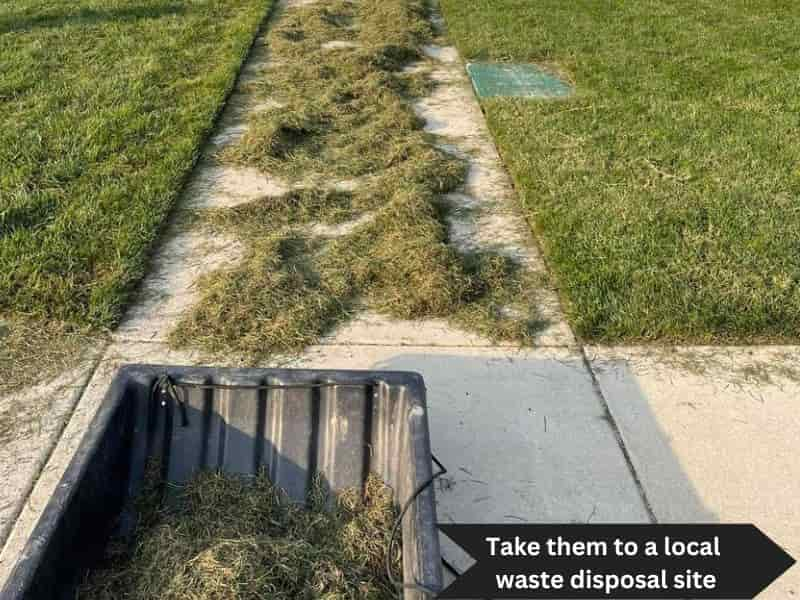
Check if your state allows residents to dump yard wastes at disposal sites. If they don’t, use other options, such as organic waste recycling plants.
If they do, pack the clippings in the recommended waste bags and haul them to the disposal site. Ensure you follow instructions on how to bag the Grass Clippings if I have Weeds.
You may or may not need to pay disposal fees; carry a few bucks if they charge you.
Can you leave a pile of grass clippings on a lawn?
Lawn experts don’t recommend leaving a pile of grass clippings on the lawn. A pile of grass clippings can smother the grass underneath and damage the yard.
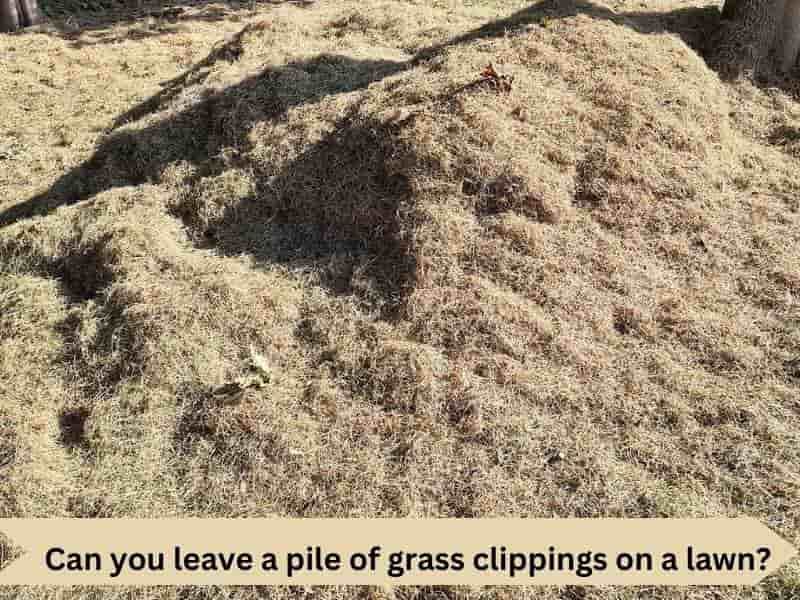
However, you can leave grass clippings after spreading them evenly throughout the lawn. This is ideal if you mow your lawn regularly and the clippings are shorter than 1 inch. Shorter clippings decompose faster and would release nutrients into the soil.
Avoid longer clippings as they clump and won’t quickly decompose, especially when reseeding a dead lawn.
Do grass clippings improve the soil?
Recycling grass clippings or using them as mulch improves soil fertility and health.
When you spread them on bare or neglected land, grass clippings reduce soil erosion. They also hydrate soil since 80-85 percent of their content is water. Grass clippings help to retain soil moisture by reducing evaporation.
Lastly, grass clippings release nutrients into the soil and provide organic matter to soil microbes when decomposing.
How long does it take for grass clippings to decompose?
Grass clippings take different times to decompose, depending on how you repurpose them.
After mowing, leaving the clippings on the lawn will take approximately four weeks to decompose fully. Compost grass clippings take up to 12 weeks to decompose, while those used as mulch take 8-12 weeks.
These time frames depend on certain conditions, which you can adjust to speed the decomposition rate.
How to speed up grass clipping decomposition
- To make your grass clippings decompose faster when you leave them on the lawn, water the yard often to keep it moist. Water is a good decomposition accelerator; however, avoid and fix a too muddy lawn first since it may also slow the decomposition process.
- Mow the lawn regularly so you cut less than 1 inch of grass clippings, which will break down faster to release nutrients to the soil.
- If you add grass clippings to compost or use them as compost, you can improve air circulation and moisture level. Track temperatures to ensure faster decomposition.
- Turn the compost weekly using a pitchfork to increase air and heat circulation for fast breakdown.
- Moisten the compost slightly to increase moisture content for fast decomposition. The compost pit shouldn’t be too dry or too muddy as these will slow the decomposition rate.
- Aerate the composting grass clippings by placing them on dry land or a wooden box with spaces in between.
- Regularly check temperatures to ensure it’s between 110℉ and 160℉. This temperature range is ideal for faster decomposition.
References
- University of Missouri Extension: ‘Don’t Bag it’ Lawn Care.
- University of Missouri Extension: Grass clippings, Compost, and Mulch: Questions and Answers.

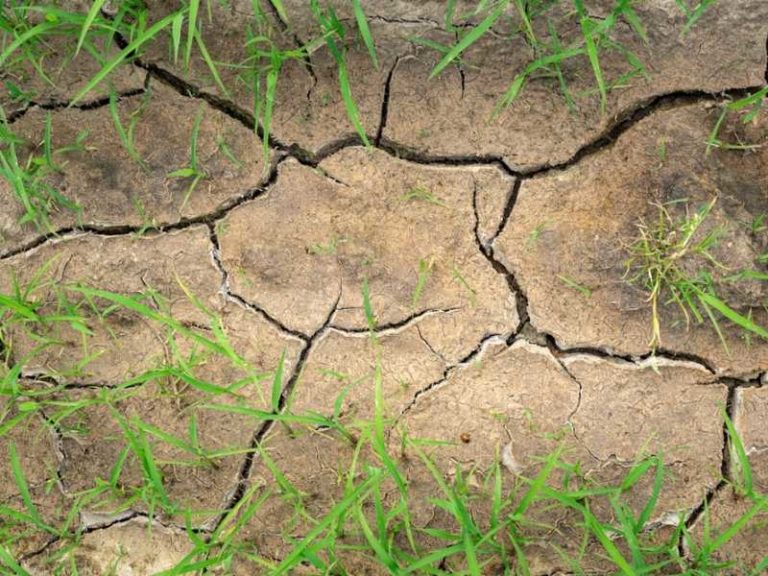
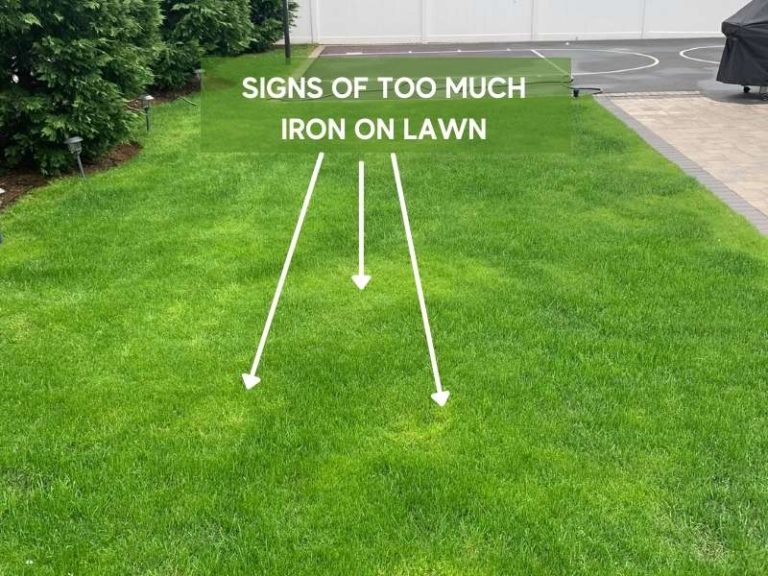
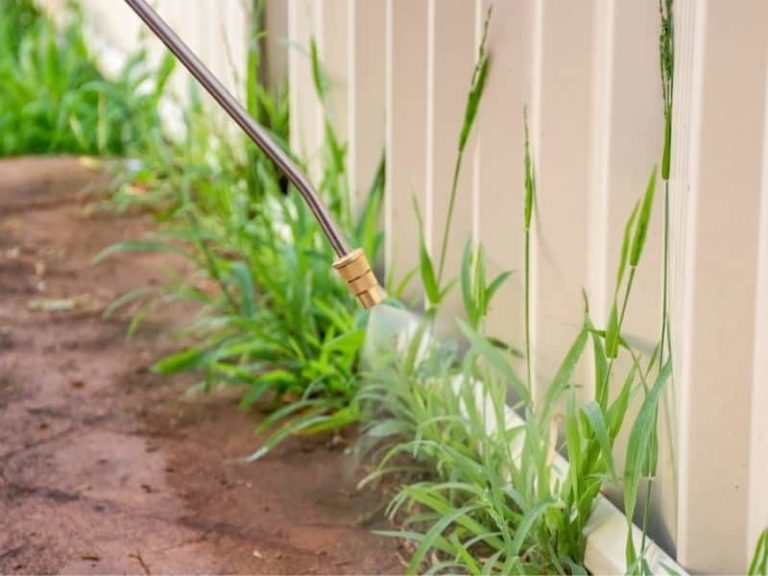

![When to Fertilize New Sod [Guide for St. Augustine, Bermuda + Zoysia]](https://lawnmodel.com/wp-content/uploads/2023/01/When-to-Fertilize-New-Sod-Guide-for-St.-Augustine-Bermuda-Zoysia-768x576.jpg)
